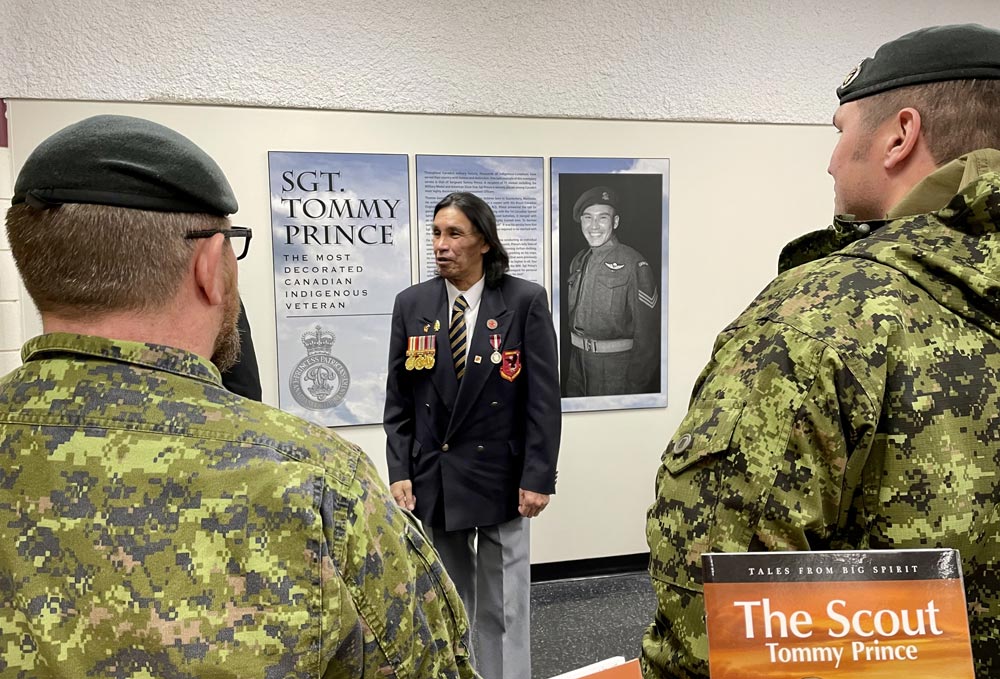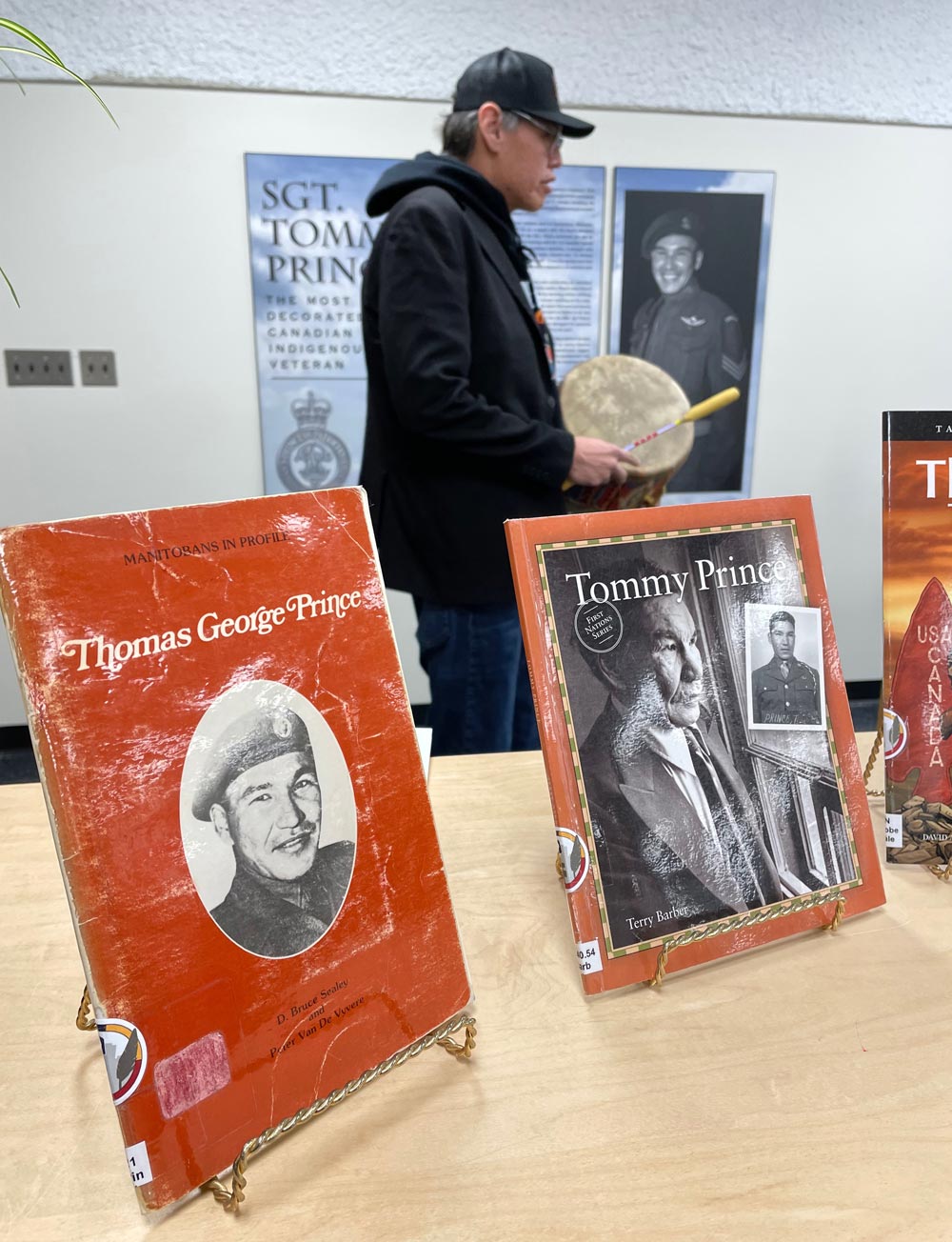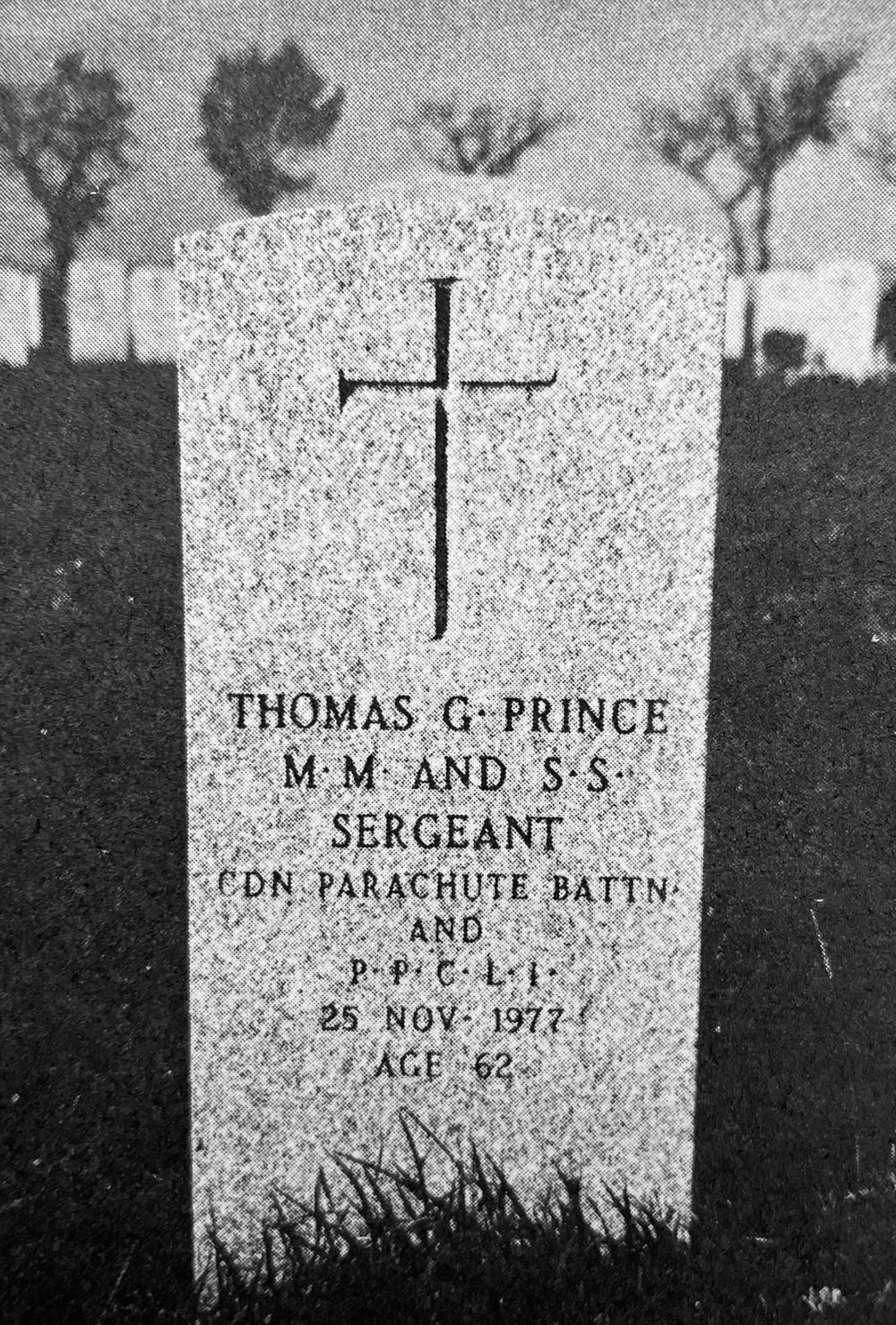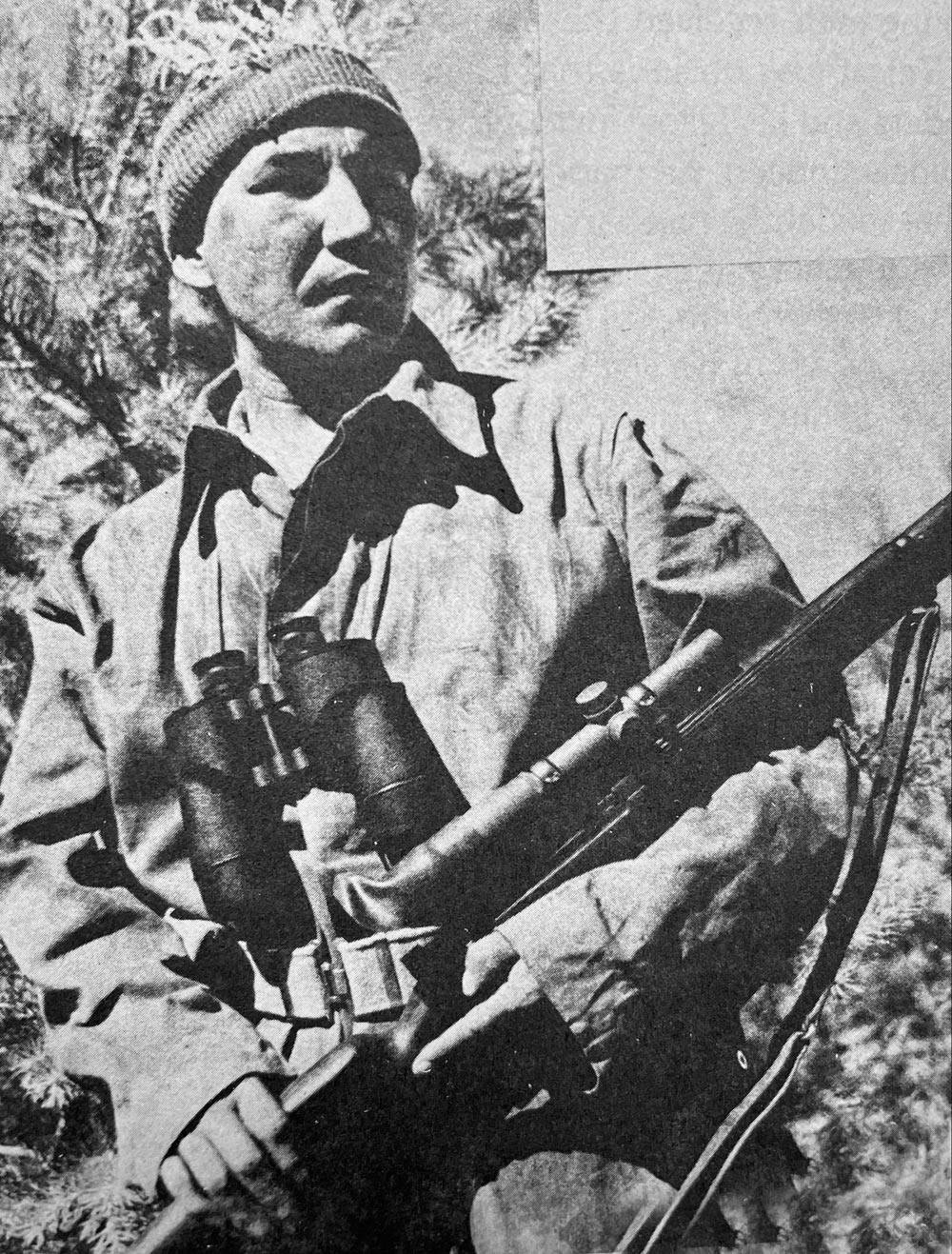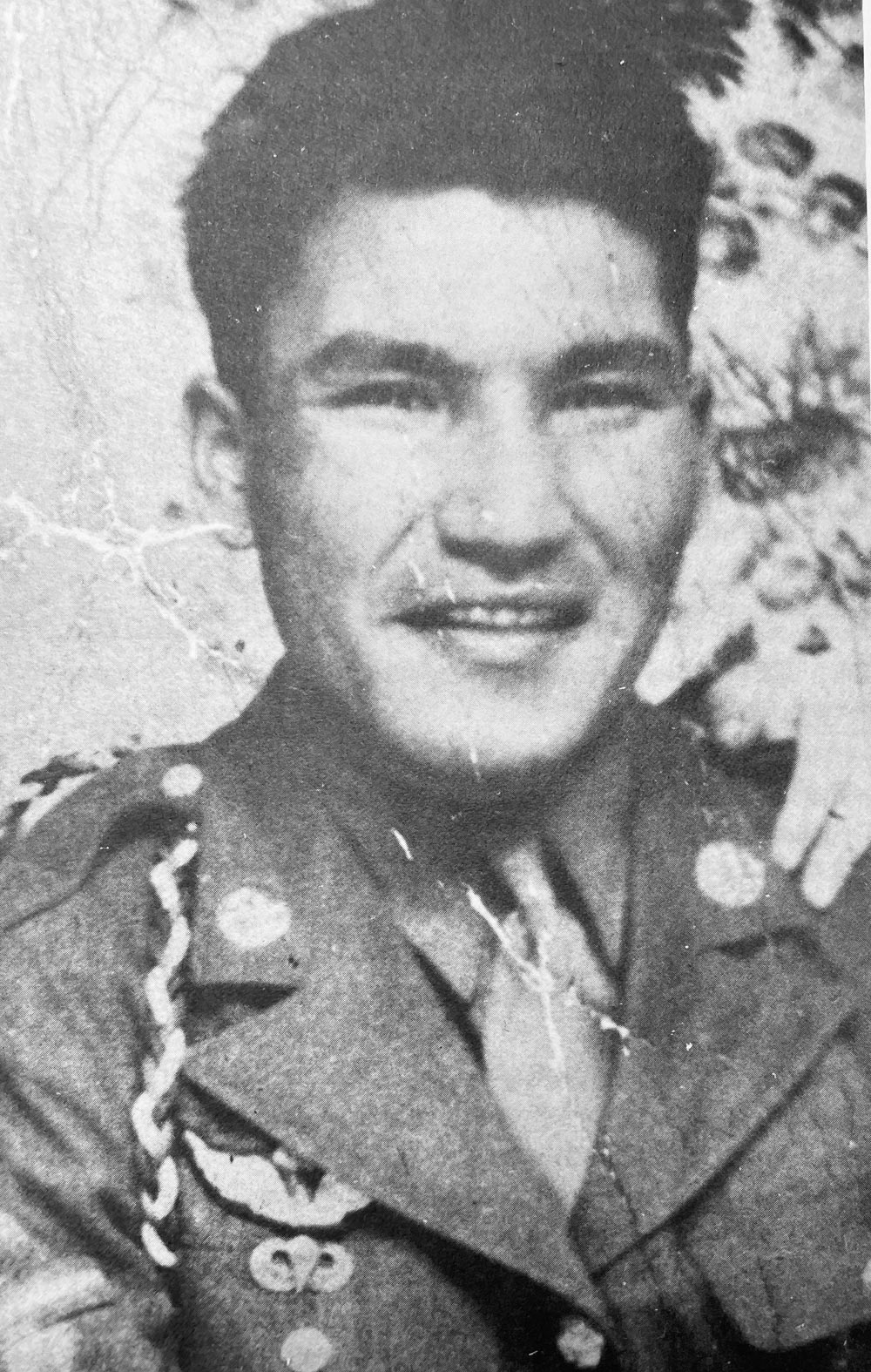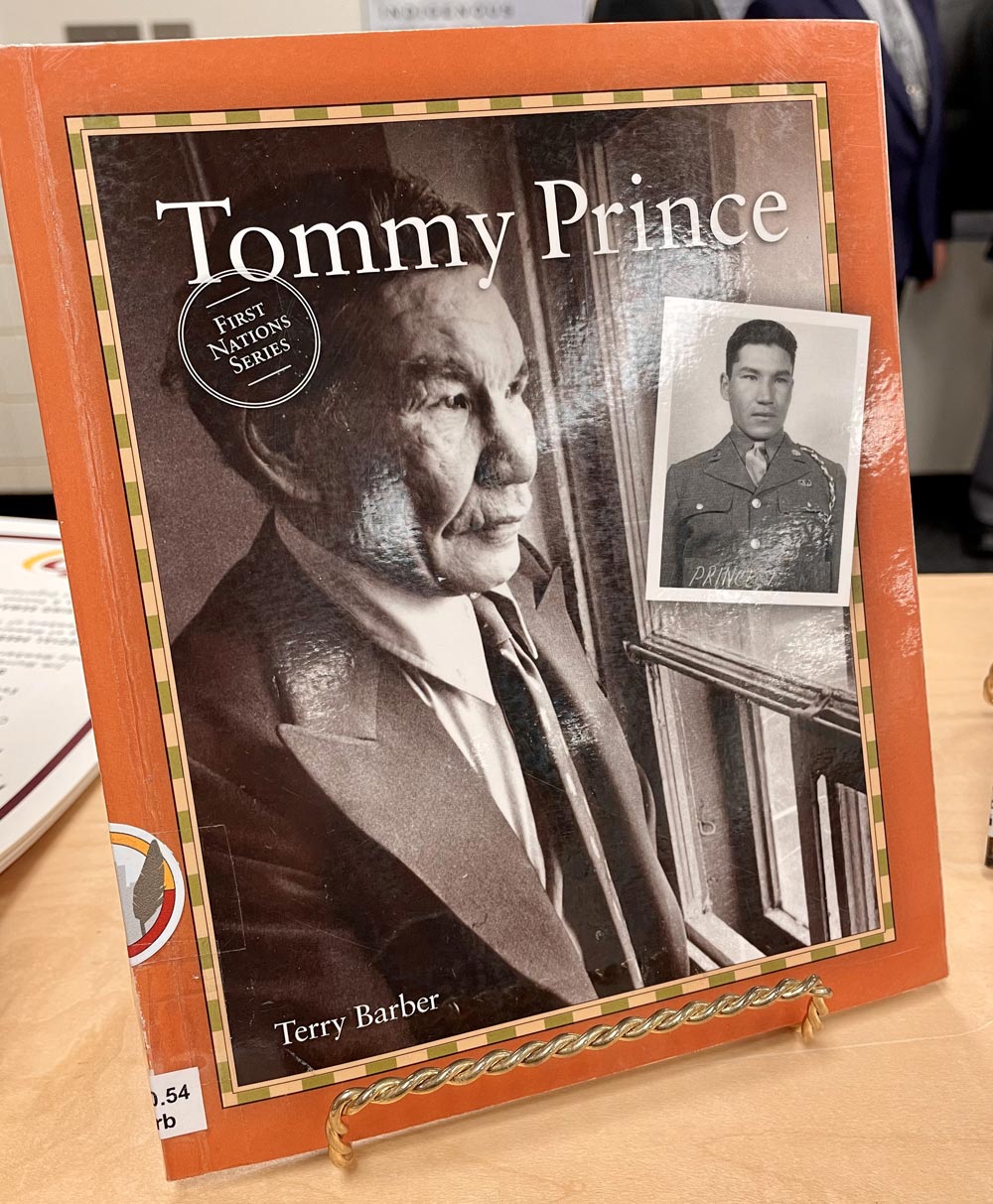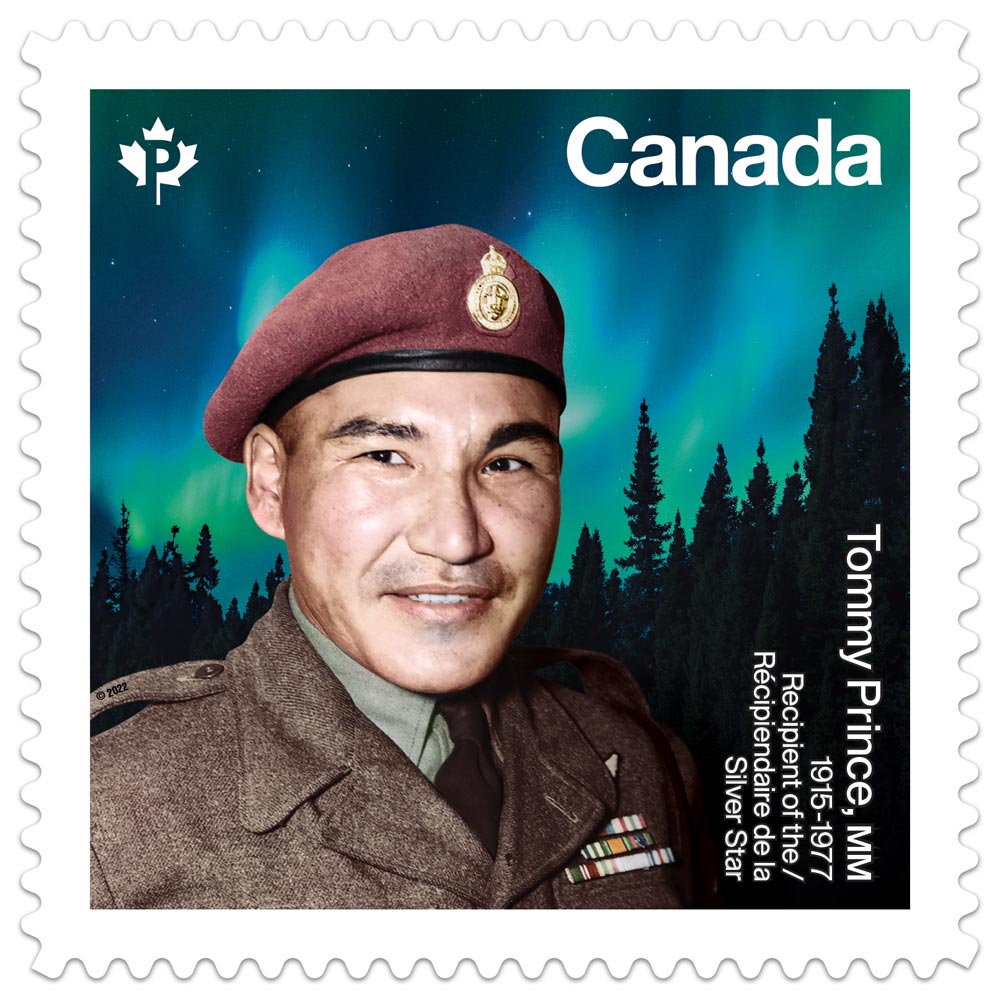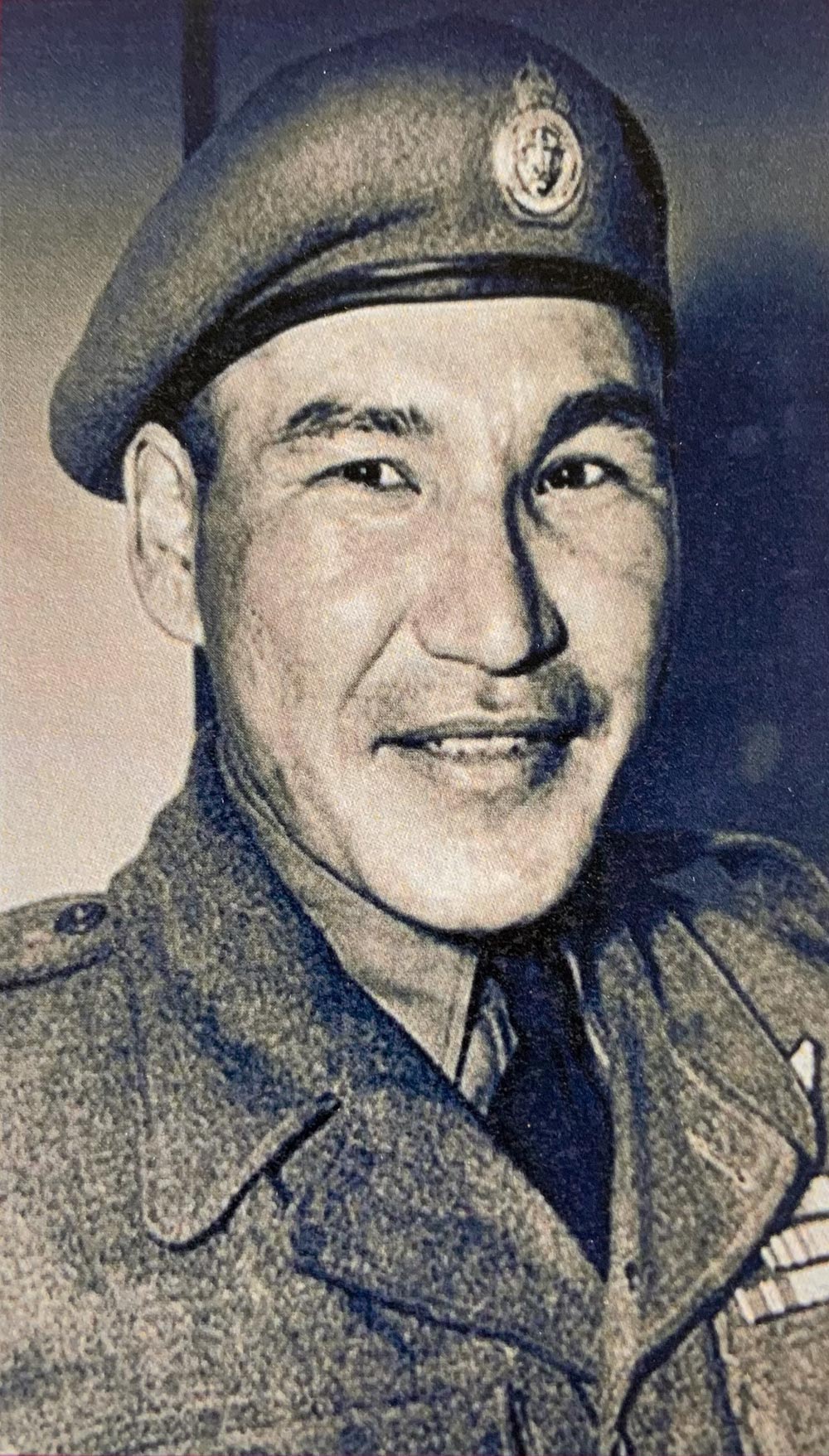

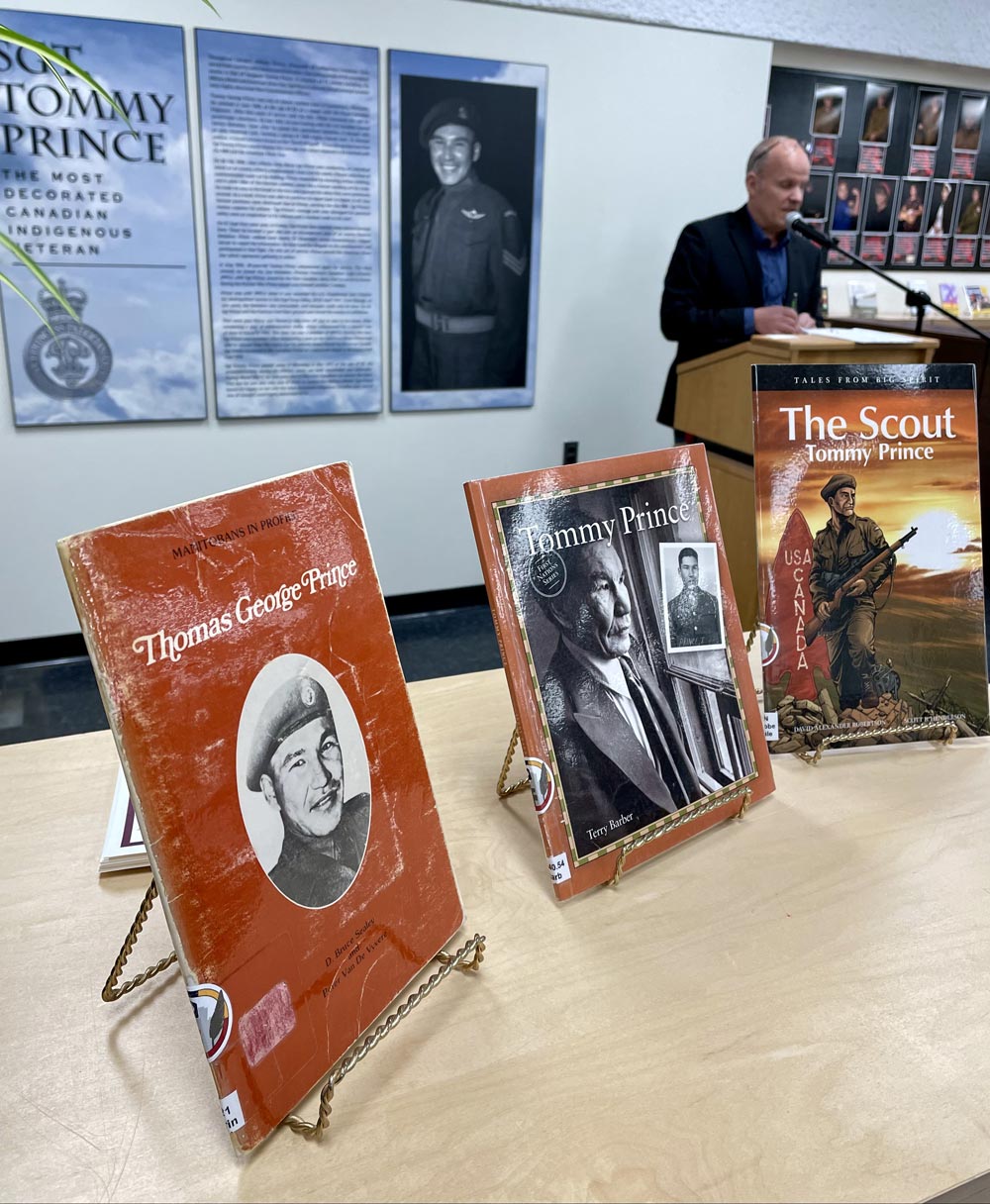
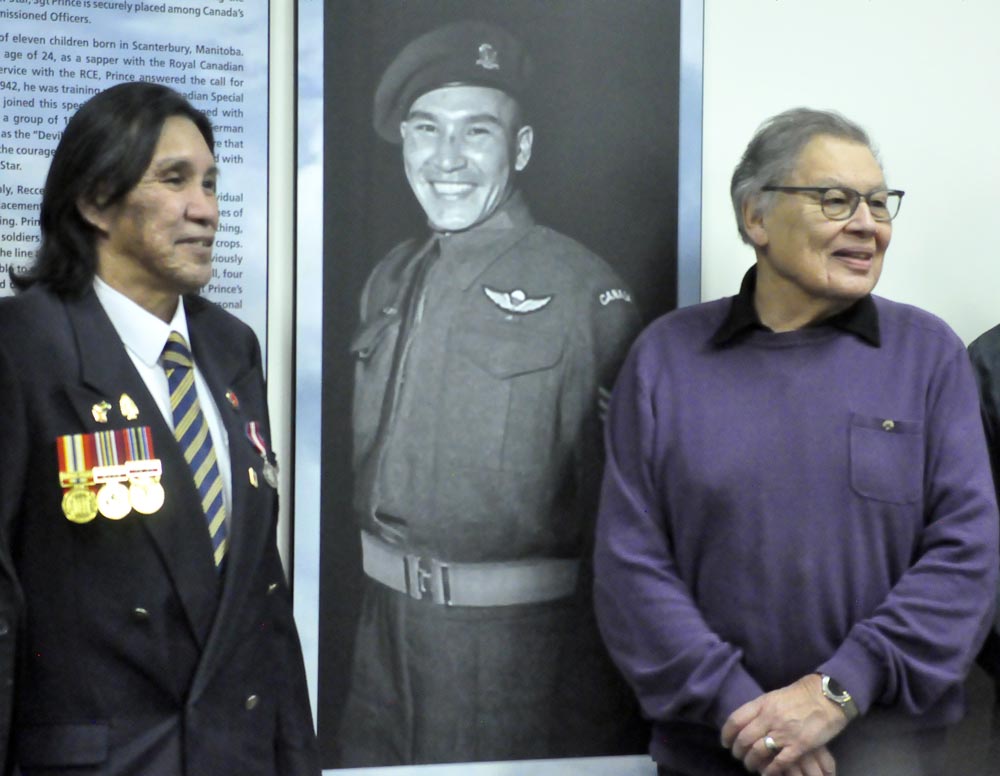

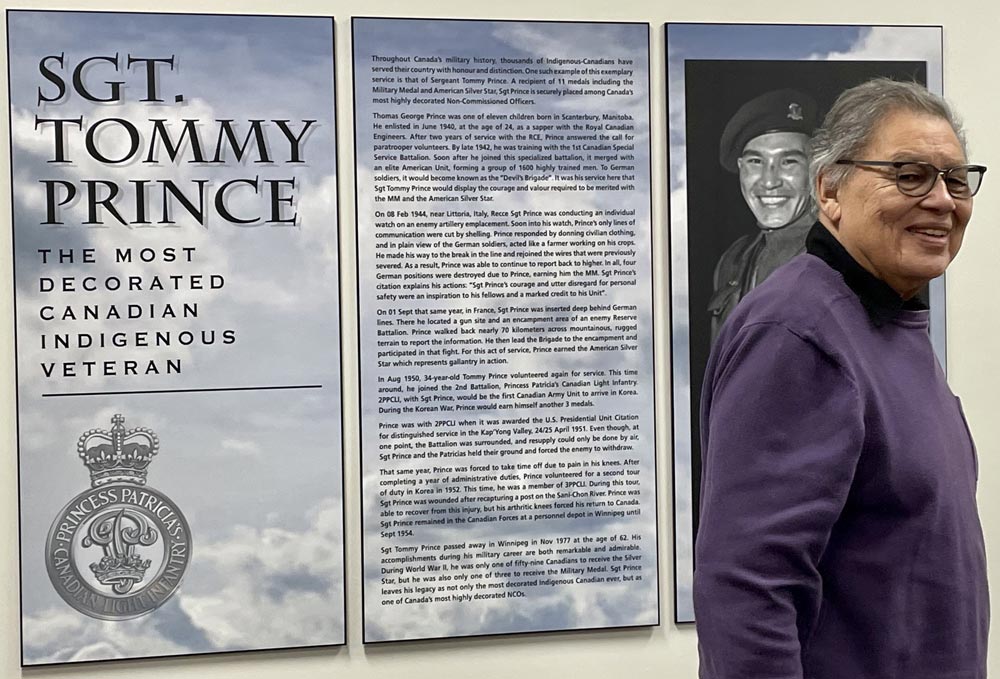
Jules Xavier
Shilo Stag
“My father was in Ottawa when that photo was taken … he was there fighting for changes to the Indian Act, something we’re still fighting to make changes.”
Tommy Prince Sr. referenced this book cover photograph — his elderly father staring out a hotel window — with the Stag while perusing one of three books about his father on display at the newly named Sgt Tommy Prince Library.
After the Second World War, Sgt Prince MM SS (USA) served as a spokesman for the Manitoba Indian Association, where he lobbied the federal government to change the Indian Act. Sgt Prince had a strong sense of duty and pride in his people, dedicating himself to attaining increased educational and economic opportunities for Indigenous peoples.
Crocus Plains Regional Secondary School chose Canada’s most-decorated Indigenous war veteran — 11 medals from two wars — to name its library after him with a Feb. 3 dedication ceremony.
Students doing research or looking for a place to catch up on their reading will now enter a school venue referred to as Sgt Tommy Prince Library.
“This idea was introduced last spring about the library space,” recalled Crocus principal Chad Cobbe. “It was an idea as a school we embraced and quickly the idea was to name [library] after a special national highly-decorated individual like Tommy Prince … it made a lot of sense.”
He added, “This was easy to embrace as we have a high percentage of Indigenous students in our school. There was lots of positive programming in our school, so a lot of factors contributed with this opportunity to name the library after Sgt Tommy Prince.”
Before dignitaries and family members spoke, there was a traditional elder blessing done by Jason Gobeil.
“Tommy Prince is a legend among Indigenous people,” offered Gobeil. “Our youth need to know his acts of heroism in our community … he made sacrifices as a man serving his country.
“It’s nice to see his name above the doorway at entrance where children will come and learn. He won’t just be remembered in books, but will be remembered in this library.”
Brandon School Division (BSD) trustee Jim Murray provided a biographical look back at Sgt Prince’s life, and acknowledged naming the library after this decorated soldier who served in two wars because today‘s youth need a role model like him, when it came to serving his country, who as a warrior on the battlefield, put his life at risk serving others to ensure our freedoms back in Canada.
“I can think of no better a role model for our youth than Tommy Prince … he was serving with valour for his country,” he said. “This is a great idea to dedicate the library in memory of Tommy Prince. It is our sincere hope the generations of young people who avail themselves of this library will take some time to try and understand his life.”
Sgt Prince’s son Tommy Prince Sr concurred when he spoke briefly after listening to others talk highly of his father.
“Thanks for this,” he said. “You all make history today by naming this library after the late Sgt Tommy Prince MM SS.”
After speeches, photo opportunities occurred with many in attendance posing with Tommy Prince Sr in front of his father’s memorial display, including a photograph of 2PPCLI CO LCol Jesse van Eijk, RSM CWO Dunwoody and Indigenous Advisor to the Canadian Army Commander MWO Sheldon Quinn.
Following the dedication ceremony, guests were treated to a lunch hour “feast” created by the Crocus’ culinary staff — menu included bison loin, with blueberry pie for dessert.
• • •
For students spending time in the Crocus library doing school work or reading a favourite book, who was Sgt Tommy Prince?
War hero and Indigenous advocate Sgt Thomas George Prince was born on Oct. 25, 1915 in Petersfield, MB. From the Brokenhead Ojibway Nation, he is one of the most-decorated Indigenous war veterans in Canada, having been awarded 11 medals for his service in the Second World War and the Korean War. When he died on Nov. 25, 1977 in Winnipeg, he was honoured at his funeral by his First Nation, the province of Manitoba, Canada and the governments of France, Italy and the United States.
Sgt Prince was born in a canvas tent in Petersfield, Manitoba, in October 1915, one of 11 children born to Harry and Elizabeth Prince of the Brokenhead band of Ojibwe. He was a descendent of Peguis, the Salteaux chief. When he was five, his family moved to the Brokenhead reserve, now known as Brokenhead Ojibway Nation in Scanterbury.
Sgt Prince was a survivor of the residential school system. He learned to be a superb marksman and an excellent tracker on the reserve. His father, a hunter and a trapper, taught him. He applied to join the Canadian military several times but was rejected. Indigenous people faced widespread discrimination which likely played a role in his rejection. He was finally accepted in the early years of the Second World War.
Sgt Prince enlisted in the Canadian Army on June 3, 1940 and was assigned to the 1st Field Park Company of the Royal Canadian Engineers. By 1942, he was a sergeant with the Canadian Parachute Battalion. Posted to the 1st Canadian Special Service Battalion, he was among a select group of Canadian soldiers sent to train with an American unit to form a specialized assault team. They became the 1st Special Service Force (1st SSF), known to the enemy as the “Devil’s Brigade.” The name was adopted by Hollywood as the title of a 1968 portrayal of the elite unit. Sgt Prince was portrayed as “Chief.”
He distinguished himself with the 1st SSF in Italy and France, using the skills he’d learned growing up on the reserve. He displayed his covert abilities in a celebrated action near the front line in Anzio, Italy. In February 1944, he volunteered to run a communication line 1,400 metres out to an abandoned farmhouse which sat just 200 metres from a German artillery position. He set up an observation post in the farmhouse and for three days reported on German movements via a communication wire.
When the wire was severed during shelling, he disguised himself as a peasant farmer and pretended to work the land around the farmhouse. He stooped to tie his shoes and fixed the wire while German soldiers watched, oblivious to his true identity. At one point, he shook his fist at the Germans, and then at the Allies, pretending to be disgusted with both. His actions resulted in the destruction of four German tanks which had been firing on Allied troops.
In France in the summer of 1944, Sgt Prince endured a gruelling trek across rugged terrain to locate an enemy camp. He travelled without food or water for 72 hours. He returned to the Allied position and led his brigade to the German encampment, resulting in the capture of more than 1,000 German soldiers.
When the fighting ended in France, Sgt Prince was summoned to Buckingham Palace, where King George VI decorated him with the Military Medal (MM) and, on behalf of the American president, the Silver Star with ribbon. He would also receive the 1939-1945 Star, Italy Star, France and Germany Star, Defence Medal, Canadian Volunteer Service Medal with Clasp and the War Medal.
He was one of 59 Canadians who were awarded the Silver Star during the Second World War, only three of whom also possessed the Military Medal. Sgt Prince was honourably discharged on June 15, 1945 and returned to Canada.
Back home, Sgt Prince faced racism from the Canadian government. As an Indigenous man, he was not allowed to vote in federal elections — in spite of his wartime service — and was refused the same benefits as other Canadian veterans.
He started a business, which briefly prospered. He left it in the hands of friends so he could serve as a spokesman for the Manitoba Indian Association, where he lobbied the federal government to change the Indian Act. Following his campaigning, he came home to discover that the business he’d entrusted to friends had failed in his absence. Facing unemployment and discrimination, he re-enlisted in the military and served with the Princess Patricia’s Canadian Light Infantry (PPCLI).
Sgt Prince resumed his former rank and began training new recruits for the Korean War. He was then part of the first Canadian unit to land in Korea, where he served with a PPCLI rifle platoon. In Korea, he led many “snatch patrols,” where a small group of soldiers would travel into enemy territory and launch sneak attacks before retreating. One overnight raid led to the capture of two enemy machine guns.
Suffering from bad knees, Sgt Prince returned to Canada for treatment in 1951. But he went back to Korea for a second tour in 1952. He was injured again and spent weeks in hospital, where he was still recovering when the Korea Armistice came into force in 1953, ending the fighting.
He returned to Canada and remained in the Army, serving at Winnipeg’s personnel depot, until September 1954, when he was honourably discharged.
For his two tours of duty in Korea, Sgt Prince was awarded the Canadian Korea Medal and United Nations Service Medal (Korea). Posthumously, he also became entitled to the Canadian Volunteer Service Medal for Korea, created in 1991.
Sgt Prince had a strong sense of civic duty and a fierce pride in his people. He dedicated himself to attaining increased educational and economic opportunities for Indigenous peoples. “All my life I had wanted to do something to help my people recover their good name. I wanted to show they were as good as any white man,” he said.
He was married and had five children. In 1955, he saw a man drowning at the Alexander Docks in Winnipeg and leapt in to save him.
Sgt Prince fell on hard times and spent his last years living in a Salvation Army shelter. He died at the Deer Lodge Hospital in Winnipeg on Nov. 25, 1977. He was 62. Sgt Prince is buried in Brookside Cemetery, a military gravesite in Winnipeg. A delegation of the Princess Patricia’s served as his pallbearers. Men from his First Nation chanted the “Death of a Warrior” song as he was lowered into the grave. More than 500 people attended his funeral, including Manitoba’s lieutenant governor and the consuls from France, Italy and the USA.
What is Sgt Prince’s legacy? He is one of the most decorated Indigenous war veterans in Canada. Aside from his significant military contributions to this country, he is also remembered as an Indigenous advocate who fought for equality and Indigenous rights. Prince’s nephew, Jim Bear, told CBC News in 2020 that he remembers his uncle as “a visionary” who was in favour of abolishing the Indian Act, something Bear points out “we’re still trying to change.”
Did You Know?
On Oct. 17, 2022, Canada Post released a stamp honouring the life and legacy of Sgt Tommy Prince. The stamp features Prince in his Korean War uniform, with the Northern lights in the background.
In 2020, an online campaign was launched in support of honouring Sgt Tommy Prince as the face of a new design of the five-dollar bill.
Three Sgt Tommy Prince books were on display at the entrance to the Crocus Plains Regional Secondary School library now named after Sgt Tommy Prince MM SS (USA). Glen Pratt performed a drumming and honour song following speeches, while guests were able to meet Sgt Prince’s son Tommy Prince Sr and his nephew Jim Bear while viewing the library’s memorial war plaque. Sgt Prince served Canada in two wars, where he was awarded 11 medals. He trained at Camp Borden before going on to fight in Korea, after he served in the Second World War with a combined US/Canada unit called Devil’s Brigade. Canada Post also issued a postage stamp to honour Sgt Prince in October 2022. Photos Jules Xavier/Shilo Stag & Harriet Bear/family archives
